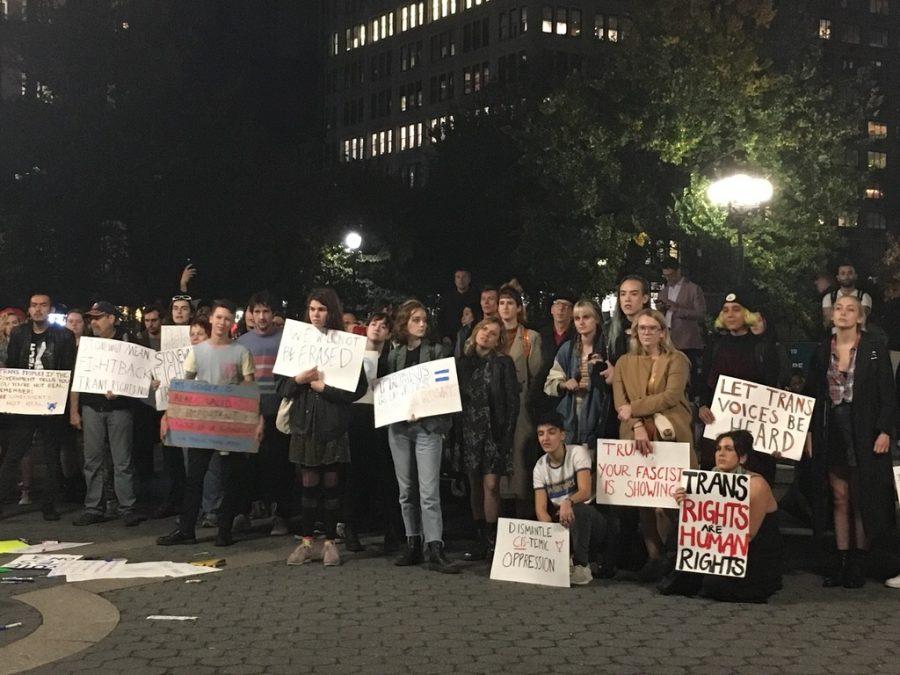Around 50 protestors chanting “give trans people better lives, now’s the time to organize” joined together on Friday in Union Square in response to a memo issued by the Trump administration.
The memo states that gender should be defined solely based on which genitalia one is born with; those supporting the policy change may feel repercussions at the ballot box on Tuesday, according to protestors.
During his administration, Barack Oama issued an executive order allowing transgender students to use their bathroom of choice, which was reversed by President Donald Trump last year. This is part of a larger push by the Trump administration to implement a less fluid and more strict definition of gender in federal institutions from prisons to the military. Transgender people and advocates for transgender rights coalesced in Union Square to express their dissatisfaction with the administration’s stance.
“I think it’s really important to show support and send a message to the rest of New York that this is a problem that really matters and there are a lot of people affected by this kind of rhetoric and policies,” said Silver School of Social Work junior Kaela Vecchia-Seitz.
Vecchia-Zeitz is cisgender and came to the protest to be an ally to the transgender community.
Midterm elections are fast approaching, presenting an opportunity for transgender rights activists to express their feelings about recent policy changes.
Hannah Sheinkman, a junior at the Pratt Institute in Brooklyn, went to the protest to support her partner, who is transgender.
“I’m really disgusted with this administration trying to erase all of trans identity from literature, from documentation,” Sheinkman said. “Without the representation and the documentation trans people are not safe in the streets.”
Sheinkman, who is registered to vote in her home state of Maryland, said she recently voted against the current governor, Larry Hogan, because of his stance on transgender rights. Hogan is a friend of Vice President Mike Pence, who has previously opposed legislation that would expand rights of the LGBTQ community. Sheinkman said Hogan’s association with the vice president “was a big swayer in why I voted against him.”
Briana Silberberg, a transgender woman, said she hasn’t missed an election since she first voted in the 2010 midterms. Attending the Transgender Day of Action in June and a transgender rights protest at Madison Square Park on Monday, Silberberg said who she votes for has gradually become more dependent on transgender issues. However, Silberberg isn’t the only one turning up the pressure — she said she’s noticed an increase in mobilization around the issue since the beginning of this year.
“Right now, there’s this sort of excitement around the political moment not just in reaction to the stuff coming out of the White House, but people are really using this as a catalyst and opportunity to advocate for the whole spectrum of things that trans people need,” Silberberg said.
Despite increased advocating for transgender rights, Silberberg feels that candidates are still unresponsive to the transgender community. This lack of reaction is what she believes has motivated people to take political action. For Silberberg, it will certainly play a role in how she votes.
“In recent history, we’ve seen Washington turn its back and the Democratic party and the Republican party turn their back on a lot of these really on-the-ground, quality of life, meat and potatoes trans issues and that is absolutely the paramount thing on my mind going into the ballot box,” Silberberg said.
A version of this article appeared in the Monday, November 5 print edition.
Email Victor Porcelli at [email protected].





















































































































































